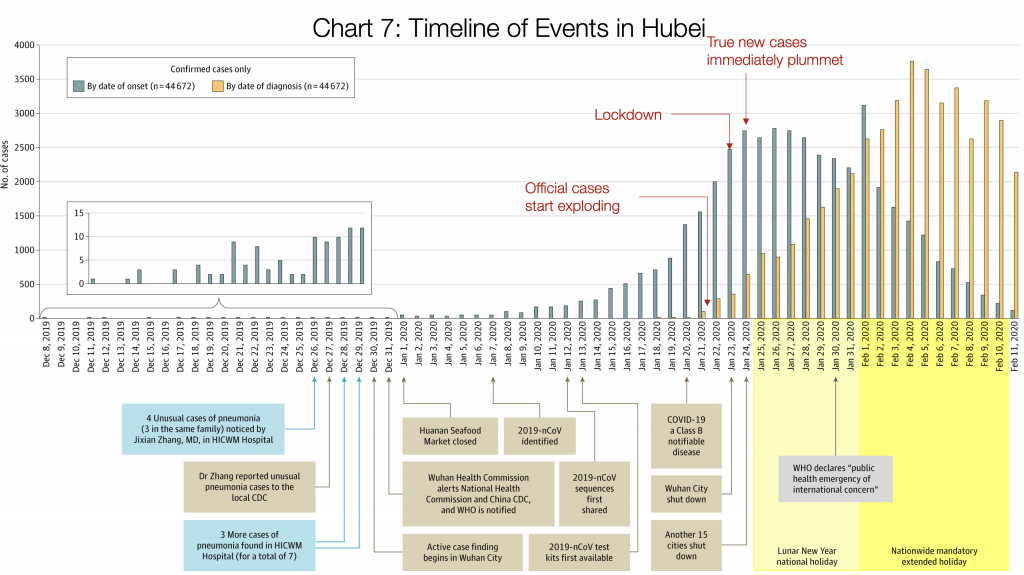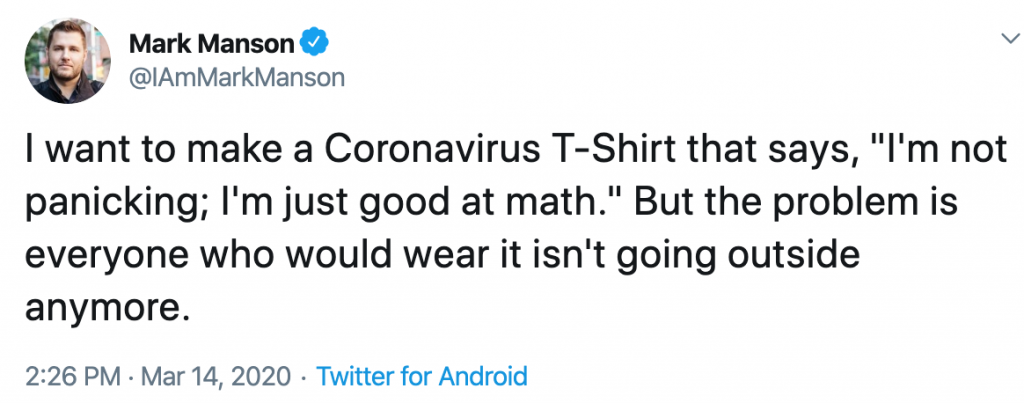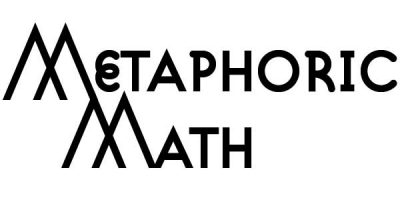Not even 10 days ago, I was making comments to a friend about the surge of emails I was receiving related to a potential pandemic and questioning how serious this viral threat truly was. Were the cancellations and concerns largely fear and hype-based, or actually evidence of prudent proactivity? I pondered how much time and energy had already been diverted from normal operations of businesses and organizations large and small in order to monitor the outbreak, develop response plans, and write emails to anyone and everyone who could possibly be affected by their choices. Was this really necessary? Well, 7 days ago the World Health Organization (WHO) officially declared the outbreak a pandemic, and my perspective shifted dramatically in the days that followed.
Much has changed in the course of a week.
Most Americans have had their normal activities and daily routines upended by massive shutdowns of places where large groups of people gather. First it was no groups larger than 250, then that dropped to 50, and now we’re supposed to keep gatherings under 10 and stay 6 feet away from one another. Shelter in place orders have already taken affect in some cities. Schools, office buildings, churches, restaurants, shopping centers, conferences, concert venues, and clubs have shuttered their doors for the next 2-3 weeks minimum with other closures stretching out several months or more as disruptions become a growing reality in an attempt to slow the spread of COVID-19, widely known across the globe as the Coronavirus.
In the span of a few days, the term “social distancing” has spread like wildfire as efforts to “flatten the curve” gain widespread adoption. Essentially, we’re dealing with many unknowns, but this virus is following basic mathematical models of exponential growth in many locations, and the lag time in symptoms and testing makes the growth rate difficult to fathom. Currently, an infected person is expected to spread the virus to approximately 2.5 more people. Thinking in terms of counting doubles (2,4,8,16,34,68…), it only takes 20 rounds of doubles to cross the threshold of 1 million. After 24 rounds, that number exceeds 16 million.
Widespread fears that medical institutions are unable to handle a large influx of patients have led to all sorts of precautionary measures to limit the transmission of the virus, as early efforts to limit person to person contact are most effective to slow the spread. Every day that passes with inaction creates critical compounding consequences.

These concepts became a primary topic of household discussion around the United States over the weekend as articles illustrating the seriousness of the situation spread across social media platforms with viral speed. Many people didn’t see this coming, but hindsight is 2020. Early evangelists started speaking out weeks ago, warning of the impending dangers that could result from a pandemic and attempting to educate citizens and policy makers about precautionary measures.
Mathematical Models
James “Mac” Hyman, professor and researcher of mathematical epidemiology at Tulane University published a paper on COVID-19 just over a month ago and led a related workshop in mid-February in an effort to improve mathematical modeling of the rate of spread. His goal is to equip public health officials with data in order to guide their efforts in mitigating what he predicted weeks ago would be a swift pandemic the likes of which we haven’t seen in a very long time. He describes the use of mathematical models in making predictions, and explains important factors to consider alongside methods of interpreting results in a new video interview published by the American Mathematical Society a week ago.
Hyman cautions that while these mathematical models can be very helpful, we must keep in mind the caveat that “predictions are based entirely on assumptions.” He quotes Pablo Picasso’s “Art is the lie that helps us see the truth,” in reference to the fact that we don’t have solid facts to model and thus shouldn’t oversell the results. The models are only as good as the data and questions they analyze.

Timeline of COVID-19 on my personal radar screen
My personal exposure to cautionary measures in response to COVID-19 began early. I’ve been working for a large global apparel corporation for several months now, and we received notice at the end of January that all travel to China should be cancelled or postponed. Corporate offices in China and Hong Kong were included in the first wave of mandatory closures and work from home policies, and there was already buzz around the Denver office regarding concerns around flying and domestic travel.
Shortly thereafter, I began reading articles and listening to podcast episodes reflecting early concern about the outbreak, one of the most notable sources being Tim Ferriss, who published a blog on 2/14 about Seatbelts and Coronavirus that caught my attention. Ferriss is known for his informed approach to risk-mitigation, and he was one of the early voices advocating that Austin’s South X Southwest be cancelled. Once that cancellation actually happened on 3/6, I knew things were serious, and this was likely the tipping point.
Just over a month after the first widespread directives came from corporate leadership, I received notice on 3/3 along with the rest of my colleagues to cancel and avoid any large business meetings of more than 15 people and we were directed move to online video conferencing instead and screen all in person meetings closely with people outside the organization. These precautionary measures were made out of extensive efforts to minimize employee exposure.
Still, it was merely Monday of last week on 3/9 that I was making remarks about how much time and resources were being put into all the emails I’d begun receiving from various companies and organizations and wondered how this was affecting productivity. Was it an overreaction? Did choir practice really need to be cancelled? I wasn’t scared, but even with my level of awareness of the effects of the outbreak in Asia, I was surprised by how quickly the panic seemed to be spreading in the US, with word of cancellations becoming increasingly widespread. I hadn’t arranged childcare for the upcoming spring break at the end of the month but was struggling to know how to plan that far ahead in light of the growing concern about a pandemic.
I knew school closure was a growing possibility, but when I got an email the morning of 3/12 shortly after I’d arrived at work that a parent had tested positive and my daughter’s school was closing immediately, the acute effects of the situation got real, real fast. Fortunately, that morning I was already in the process of getting critical work software configured on a computer that would enable me to work remotely – and realized I was just in time to beat the rush to tech support and getting my home office setup.
Later that evening, Denver Public Schools announced a district-wide extension of spring break equating to a 3-week closure. My corporate leadership mirrored this response later the following day with an announcement that all North American offices would close for 3 weeks starting 3/16 and work from home policies would be implemented, followed by a decision a few days later that all retail stores would close temporarily as well.
So here we are, in the first few days of a minimum 3-week period of school and office closures, attempting to instill routines and positivity in our home as we navigate these chaotic and uncertain times. I have so many questions, and the answers won’t be clear for a long time, if ever. All I can do is try to focus on what is within my circle of control and identify the most important elements to prioritize.
We’re living participants in a vast social experiment that behavior scientists will study for generations to come, and I’m determined to do my best to strategize and make the most of the cards I’ve been dealt. It’s a numbers game, and it really helps to understand basic math.



Math has never been more important than it is right now! Thank you for this awesome, insightful post!
Math is certainly in the spotlight lately in unprecedented ways!
Thank you for a very insightful look at what we are all experiencing together.
You’re welcome.